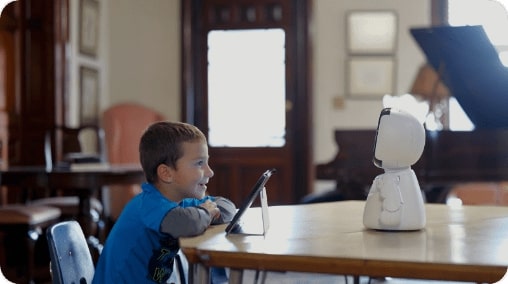The Effectiveness Of The Social Robots
Evaluating The Effectiveness Of The Social Robot In Teaching To Children With Autism:
To evaluate the effectiveness of robots for enhancing autism training, researchers conducted a study with fifteen children diagnosed with autism spectrum disorder, who were between the ages of 4 to 14 years old.
In this scientific study, children participated in two short interactions, one with a person and then one with a Robot-Assisted Instruction (RAI).

The child was sitting at a desk facing the interview partner (person or robot).
Each interview started with the interaction partner asking the child’s name. Then, the person or the robot presented themselves.
Afterward, they asked three questions from the child about his preferences (e.g. favorite animal, favorite color, etc.).
Then the interview partner told a short story and asked the child if he liked the story.
To finish, the interview partner asked the child to do an imitation game involving four gestures with the arms (e.g. left arm up, right arm up, left arm to the side, right arm to the side).
Evaluating The Impact Of The Robot Enhanced Intervention For Children With Autism
The videos of the interviews of children were evaluated by two independent observers, assessing:
Attention and engagement: To assess children’s attention to the interview partner, observers annotated the number of children’s gazes towards the interview partner and the duration of each gaze.
Anxiety and disruptive behaviors: To assess children’s repetitive and stereotyped behaviors, observers counted the number of chains of repetitive and stereotyped behaviors as well as the number of repetitions per chain.
If the child, after the pause, engaged again in the same or in a different repetitive and stereotyped behavior, it was counted as a second chain.